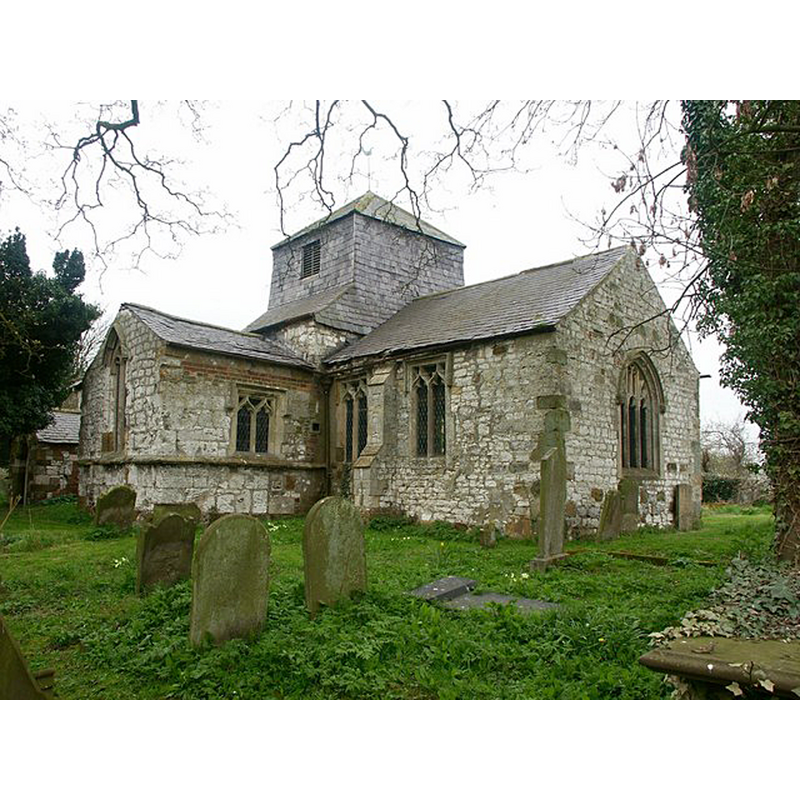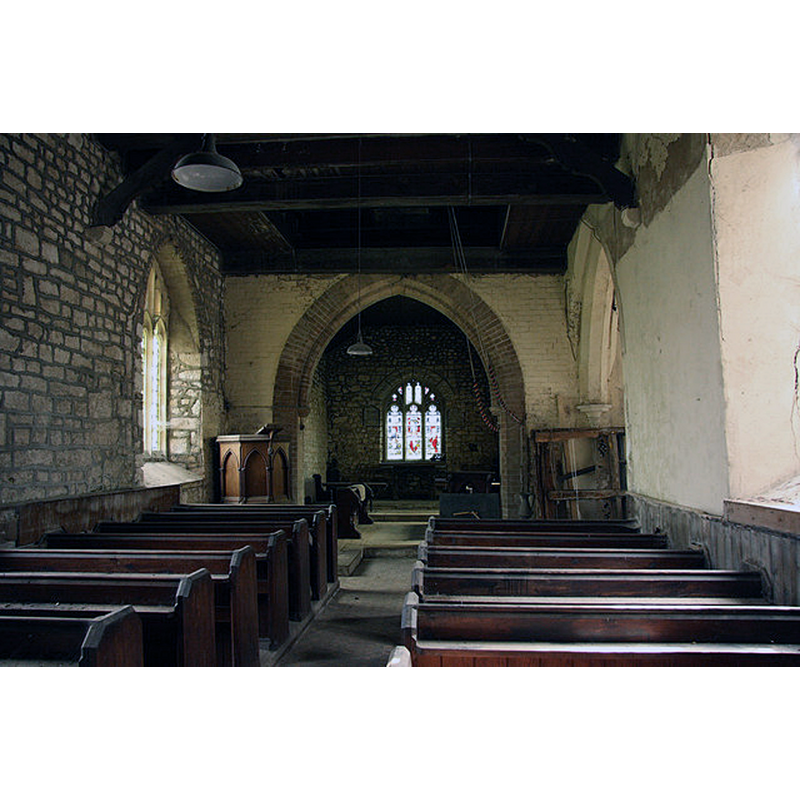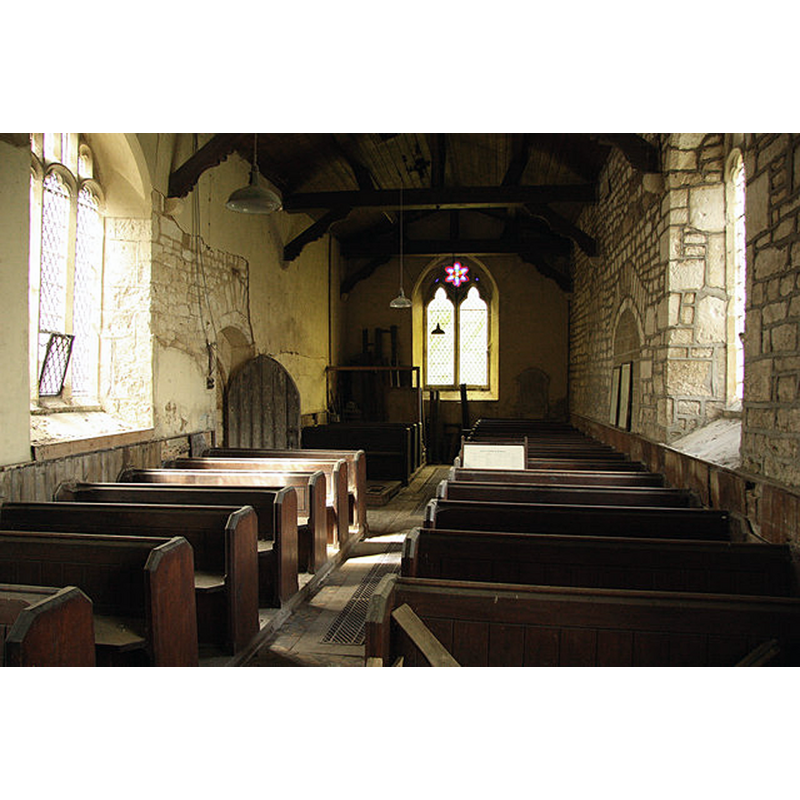Covenham St. Bartholomew / Cawthorpe
Results: 18 records
B04: Apostle or saint - Apostles - St. Bartholomew - holding flaying knife and hook
B05: Apostle or saint - Apostles - St. Matthew - holding sword and book
B06: Apostle or saint - Apostles - St. Thomas - holding spear and book
B07: Apostle or saint - Apostles - St. Judas Thaddeus - holding club and book
B08: Apostle or saint - Apostles - St. John the Evangelist and St. Simon - holding ship and book
B09: Apostle or saint - Apostles - St. Simon - holding club and book
B10: Apostle or saint - Apostles - St. Philip - with three loaves
B11: Apostle or saint - Apostles - St. Judas Thaddeus - holding saw and book
B13: Apostle or saint - Apostles - St. John the Evangelist - holding pen and book
B14: Apostle or saint - Apostles - St. Peter - holding 1 key and book
view of church exterior
Scene Description: Source caption: "St Bartholomew, Covenham St Bartholomew. Viewed from Birkett's Lane."
Copyright Statement: Image copyright © Dave Hitchborne, 2004
Image Source: digital photograph taken 11 April 2004 by Dave Hitchborne [www.geograph.org.uk/photo/430153] [accessed 10 February 2019]
Copyright Instructions: CC-BY-SA-2.0
view of church interior - nave - looking east
view of church interior - nave - looking west
INFORMATION
FontID: 10462COV
Object Type: Baptismal Font1
Church/Chapel: [originally at the Parish Church of St. Bartholomew, in Covenham -- later moved to All Saints' in Newton Heath, near Manchester]
Church Patron Saints: St. Bartholomew
Church Location: Unnamed Road, Louth, UK
Country Name: England
Location: Lincolnshire, East Midlands
Directions to Site: Located off (E) the A16, near Covenham St Mary, about 8 kms N of Louth
Ecclesiastic Region: Diocese of Lincoln
Historical Region: Hundred of Ludborough
Font Location in Church: [cf. FontNotes]
Century and Period: 14th - 15th century, Perpendicular
Font Notes:
Click to view
There are two entries for Covenham [St Bartholomew and St Mary] in the Domesday survey [https://opendomesday.org/place/XX0000/covenham-st-bartholomew-and-st-mary/] [accessed 10 February 2019], one of which reports a church in it [cf. infra]. The Covenhams site [https://covenham.org.uk/stmary.htm] [accessed 10 February 2019] notes: "Probably St Bartholomew's was the church of a small priory, where the monks and their servants would say the daily services. St. Mary's was the Church for the people of the parish. In the Domesday Book it is recorded that there was already a church in the parish and Esbern is described as the priest. This church was most probably St. Mary's and the older of the two." Lewis' Dictionary of 1848 reports: "The church contains a curious octagonal font, much admired by antiquaries". Described in Fowler (1874): "The octagonal bowl of the font is adorned with the following figures carved upon the panels, viz: --1. A representation of the Fist Person of the Holy Trinity, and the letters W. A. , perhaps the initials of William Askew, as the donor of this font. 2. The Virgin Mary and Holy Child. 3. St. James with a sword. 4. St. Bartholomew with a knife and hook. 5. St. Matthew with a sword and book. 6. St. Thomas with a spear and book. 7. St. Jude the Less with a fuller's bat and book. 8. St. John with Simon with ship and book. 9. St. Simon with club and book. 10. St. Philip with three loaves. 11. St. Jude with a saw and book. 12. St. Andrew with a saltire cross. 13. St. John with pen and book. 14. St. Peter with a key and book." Cox & Harvey (1907) list it as a baptismal font of the Perpendicular period, and repeat the suggestion regarding the donor's initials, after Fowler. According to Pevsner (1989) it is " a fine Perp octagonal piece with carvings in the East Anglian tradition of the apostles, the Virgin and the Trinity, has been transferred to All Saints, Newton Heath, Manchester." The original Pevsner work on Lincolnshire (1964) added: "The apostles stand in pairs. Their hair stands round their heads grotesquely so that the coiffure is as wide as their shoulders. A stray East Anglian piece." That edition did not mention the move, therefore one could safely assume that the font was moved to the Greater Manchester parish between 1964 and 1989. The entry for this church in Historic England [List Entry Number: 1063108] notes: "Church; late C14 - early C15, with possibly C18 brick patching, and C15 porch; north transept has been removed possibly C17 or early C18. Two episodes of restoration 1854-5 and 1863-64, the latter to the designs of the architects Rogers and Marsden of Louth." The entry in HE does not mention a font, but it appears to contradict the seniority assigned to St Mary's in another source: "St Bartholomew's is one of two churches in Covenham; the second, St Mary's, about 250m to the south, remains in use as the parish church. Both appear to be medieval rebuildings on an earlier plan, but there is evidence to suggest that St Bartholomew's is the earlier of the two and may have served as a pre-Conquest minster church. The clearest physical evidence of this is its setting at the south-west corner of a large enclosure, defined to the south by Birketts Lane, and to the east and north by a ditch and bank, visible in the field to the north and on aerial photographs. At the south-west corner the road curves round to the west of the churchyard, clearly respecting an earlier boundary." The entry for this church in the Heritage Trust [https://stbartstrust.org.uk/] [accessed 10 February 2019] notes: "The Covenham St Bartholomew Heritage Trust’s stated aim is “To secure the preservation of the church of St. Bartholomew, Covenham, Lincolnshire, for the benefit of the nation and use it for charitable purposes [...] Nothing exists of the church that originally stood on this site”. NB: we have failed so far to locate reliable information from the church sites either at Covenham or at Newton Heath, but we came across the following September 2011 statement in Rod Collins blog [http://www.rodcollins.com/wordpress/covenham-st-bartholomew-village-church-history] [accessed 10 February 2019]: "Brent said, September 9, 2011 @ 8:20 pm. Today for the first time I visited All Saints, Newton Heath in Manchester [a once industrial part of the inner city] I was amazed with the splendour of the font you mentioned from St Bartholomew. I would suspect looking at it, the date is 14th century if not before [ It looks very very old ]. It can be seen to have some deep secret history, which the attendant knew very little apart a card that gives the name of its previous home. One of the scenes depicts the Virgin Mary holding the baby. With the initial W to her right and A on her left, [facing you] what do they stand for? All Saints is one of the oldest churches in Manchester and linked with the cathedral which is situated close by. However today it is Georgian in style and a little out of context with the font. Rest assured it is in safe hands and I would expect in constant use. I feel the fine people there would be only too pleased to respond to any questions. The font is indeed a gem and well worth viewing and recording, its visual images my have meaning when in the context of St Bartholomew? I wish you luck getting to the bottom of your history. My personal feeling is it should be in its original situation or area as a testament to the good people of your county."
COORDINATES
Church Latitude & Longitude Decimal: 53.434674, 0.011001
Church Latitude & Longitude DMS: 53° 26′ 4.82″ N, 0° 0′ 39.61″ E
UTM: 31U 301454 5924787
MEDIUM AND MEASUREMENTS
Material: stone
Font Shape: octagonal (mounted)
Basin Exterior Shape: octagonal
INSCRIPTION
Inscription Language: letters
Inscription Notes: Fowler suggests that they may be the initials of William Askew, as donor of the font
Inscription Location: on one of the sides of the basin
Inscription Text: "W. A."
Inscription Source: Fowler (1874: 10)
REFERENCES
Betjeman, John, An American's Guide to English Parish Churches (including the Isle of Man), New York: McDowell, Obolensky, 1958
Cox, John Charles, English Church Furniture, New York: E.P. Dutton & Co., 1907
Fowler, James T., "The Church of St. James, Louth, and Other Churches Visited by the Society on the 26th and 27th of June, 1873", XII, Reports and Papers Read at the Meetings of the Architectural Societies of the Diocese of Lincoln, County of York, Archdeaconry of Northampton, County of Bedford, Diocese of Worcester, County of Leicester and Town of Sheffield, 1874, pp. 1-21; p. 10
Lewis, Samuel, A Topographical Dictionary of England, Comprising the Several Counties, Cities, Boroughs, Corporate and Market Towns, Parishes, Chapelries, and Townships, and the Islands of Guernsy, Jersey, and Man, with Historical and Statistical Descriptions [...], London: S. Lewis, 1831
Pevsner, Nikolaus, Lincolnshire, Harmondsworth: Penguin, 1964
Pevsner, Nikolaus, Lincolnshire, London: Penguin, 1989
![[cf. Font notes]](/static-50478a99ec6f36a15d6234548c59f63da52304e5/others/image_not_available.jpg)
![[cf. Font notes]](/static-50478a99ec6f36a15d6234548c59f63da52304e5/bsi-testing-site/others/image_not_available.jpg)


